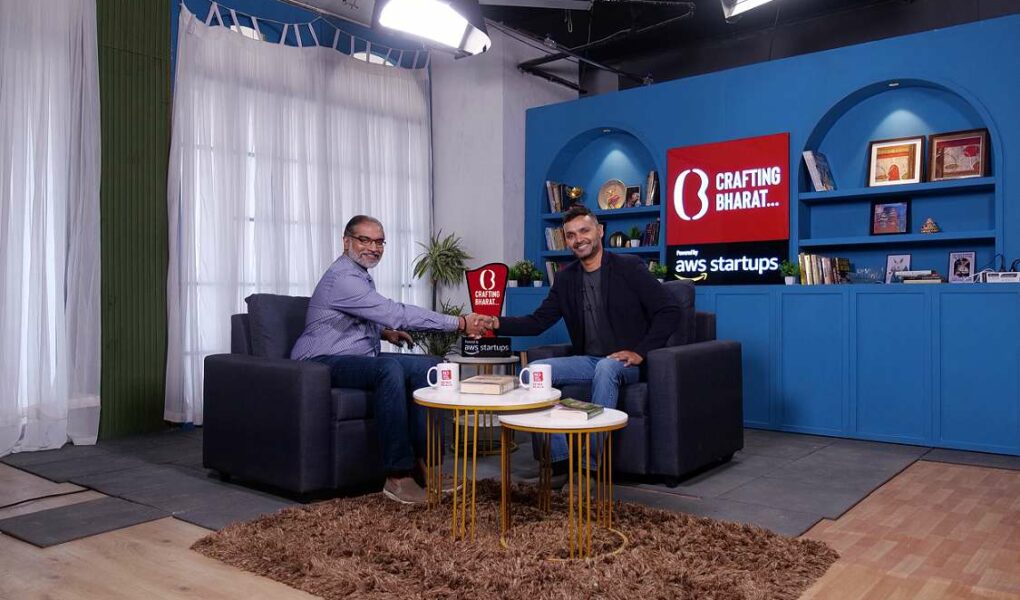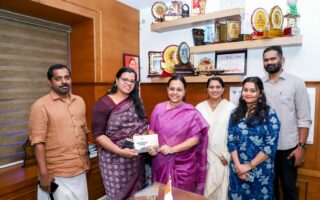Indian is a country with great potential considering its population size, open global economy, and increasing digital adoption. India’s startup ecosystem is the driving force for India’s economic growth.
The “Crafting Bharat – A Startup Podcast Series” powered by AWS, and an initiative by NewsReach, in association with VCCircle, unlocks the secrets behind these successful entrepreneurs’ journeys aiming to equip aspiring entrepreneurs and business enthusiasts with invaluable insights. The podcast series is hosted by Gautam Srinivasan, famed for hosting a diverse range of TV and digital programs, currently consulting editor at CNBC (India), CNN-News18, Forbes India, and The Economic Times.
Financial independence awareness is rising with the increasing young generation of India, and passionate and astute founder, Dale Vaz, Founder & CEO Founder of Aaritya, is on a mission to make financial independence seamless. In the Crafting Bharat Podcast Series, Vaz talks about his entrepreneurial journey, building a trading platform and upcoming trends in the industry.
Explore the tales of Indian startup founders’ transformation from dreams to reality, navigating challenges to seize opportunities through the Crafting Bharat Podcast Series.
Video Link: – https://www.youtube.com/watch?v=UNLfEdC4EPA
Segment 1: The Incubator
What was going through your mind when you put in your papers around this time last year as the CTO of a (reclaimed) decacorn to lead a startup of your own?
There were a couple of factors that were running through my mind back in December of the 1 year. One factor was that I have always seen my career in chunks of 5 years. Every five years I would take out time to relook at what I am doing and plan the next 5 years. I believe that 5 years is a good chunk because it gives you enough time to build something meaningful and at the same time it’s a good enough chunk where you can then think of the next 5 years as a certain plan. So, I was coming up on 5 years at Swiggy and one option was always open which was to continue. But I have always had this itch at the back of my mind about taking the experience I have gained in working at a consumer product company and applying it to some transformative space. That itch was very strong, and it became even stronger as I was thinking about the next phase of my life.
How did you sync your expectations with the investors for Aaritya?
My journey with the VC Community has been a revealing one because from the outside it would appear that they would just give the money away. But interestingly what I learned is that the VC Community is very well educated about the space and so they have their own perspective and belief on what will work and what won’t. In terms of aligning the investors with my vision, it was largely mutual agreement, where we both came to a place where we both felt that we need to focus on the long-term goal and the long-term is really looking at the new age generations of users coming up, as more than half of our country is 29 years and below.
Considering your vast tech experience with Amazon, how do you think AWS could be an effective partner to help you scale up?
I have a history with AWS due to my past work at Amazon and Swiggy, we have chosen AWS as our partner for Aaritya. There are a few reasons why we prefer AWS; one, they give us the ability to scale but in a very cost-effective manner; second, some of the AWS managed services allow us to take away some of that operational load and give it away to AWS.
Segment 2: The Accelerator
Considering your experience, what would you say is the key to a good working relationship with the venture capital folks, for all the newly minted founders listening in?
It’s very early for me to give advice as I have been doing it for a year now, but one thing that has really worked for me so far is being transparent.
What’s your view on dealing with tech debt that some startups face when they scale up too quickly?
I have this model which I have used which has kind of helped me. I see debt as two different types, one is a short-term mistake that is expensive to fix like a credit card debt and second is the kind of debt you consciously take like a home loan which is not too bad to have it around. As a leader you need to balance on when you are taking conscious debt which you can pay off over time versus when you are taking a poor decision that can lead to a big pain. As a leader if you can manage conscious calls then you can achieve the balance between debt and speed of execution.
The Indian startup ecosystem has been booming making its mark at the global level. With increasing digital adoption and passionate entrepreneurs, the future of the Indian startup ecosystem is promising.
Stay tuned to the Crafting Bharat Podcast Series as we bring you these inspirational entrepreneurs for insightful and candid discussion with Gautam Srinivasan.
Follow Crafting Bharat
https://www.instagram.com/craftingbharat/
https://www.facebook.com/craftingbharatofficial/
https://x.com/CraftingBharat
https://www.linkedin.com/company/craftingbharat/




